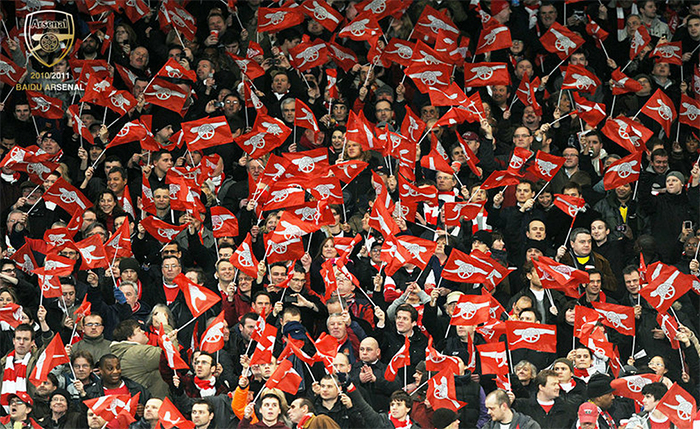
任何体育项目的核心目标都是维持结果的不确定性,换句话说,他们需要保证,比赛结束之前没有任何一个人能够知道比赛的结果。为了达到这个目标,管理层需要保持竞争的平衡性;也就是说,参与竞争的两方要势均力敌。因此组建、经营和发展体育联盟远比想象中的要复杂和艰难。
1992年英国超级联赛的诞生是英国足球历史上最具深远意义的变革之一。以1990年出台的一纸文书“英国足球蓝图”为根基,英超一路风雨兼程,已经基本完成了足球在英国的商业化和英超联赛的海外市场营销。世界足球顶级富豪俱乐部排名榜上英国占据了半壁江山,而英超的比赛已经远销200多个国家,登上了大银幕。
当然,英国足球这一路走来并非十全十美。新联盟的诞生本应惠及国家队,然而自从1992年以来,英格兰国家队再未能染指大赛的桂冠,也很少出现在世界排名的前列。除此之外,英国俱乐部在欧洲冠军联赛的征途也是十磨九难。英超最大的俱乐部曼联2009年以后再未能问鼎欧冠。
对于英超联赛给英国的其他级别联赛,乃至整个欧洲带来的影响,人们的看法褒贬不一。欧足联使用“财政公平竞赛规则”的原因之一就是为与英国足球日益壮大的金元力量抗衡。此外,尽管活跃于英超的俱乐部赚的盆满钵赢,但是,低级别联赛的俱乐部仍然囊中羞涩。
英超官方一直声称英超联赛为英国足球带来了积极的影响。英超资助了英国足球各级别的比赛,包括社会活动,社区组织以及草根足球。他们还自称是全欧洲分配奖金最公平的足球联盟。但评论家们并不这么看,他们强调在分发奖金时,如阿森纳和切尔西这样的大俱乐部常常切走最大块的蛋糕。事实也确实如此,虽然上个赛季莱斯特城问鼎英超(阿森纳排名第二),但他们只排在奖金榜的第五位,阿森纳则拿到了最丰厚的奖金。

▲ 粉丝众多的阿森纳在上赛季获得了英超奖金榜的头名
关于英超利弊兼存的讨论将人们的视线转向了联盟的构造以及联赛的设计方面,这是任何体育项目的管理层都无法逃避的难题。任何体育项目的核心目标都是维持结果的不确定性。换句话说,他们需要保证,比赛结束之前没有任何一个人能够知道比赛的结果。为了达到这个目标,管理层需要保持竞争的平衡性;也就是说,参与竞争的两方要势均力敌。
举例来说,在美国这样的目标是通过特许经营,工资上限以及选秀系统的组合来实现的。在欧洲,特别是足球,维持竞争的平衡性是一个很棘手的难题。欧盟法律规定球员的工资不能被任何监管当局以任何方式限制。同时欧洲也没有和美国职业篮球联赛(NBA)相似的大学选秀机制。特许经营体系在欧洲体育界也是空白;俱乐部坐落于与其有历史联系的社区。将俱乐部迁移到其他地区会引起球迷的巨大恐慌。
因此组建、经营和发展体育联盟远比想象中的要复杂和艰难。欧足联目前正在研究改进欧洲冠军联赛的方法,联赛的一些既得利益者呼吁欧冠联赛恢复“联赛冠军”的准入门槛。然而在现行的体制下,欧洲冠军联赛已经成为世界体育商业巨头之一,每年从小组赛和之后的淘汰赛中获得数百万美元的收益。
重新设计欧洲冠军杯需要欧足联拿出相当微妙的政治手段。欧冠带来的经济收益十分丰厚,许多俱乐部凭借晋级欧冠的奖金发家致富。但欧洲各地的几支顶级球队主宰欧冠的局面引发了批评意见,有人认为欧冠联赛严重偏向少数几家俱乐部,而“财政公平竞赛规则”在这方面也没有发挥很大作用。
与此同时,欧洲的几大俱乐部如皇家马德里,尤文图斯和曼联则已经急不可耐的表示自己为欧冠的转播和赞助带来了巨大的商业吸引力,理所应当应该分得更多的奖金。的确,欧洲俱乐部协会发表言论声称,欧洲的顶级俱乐部足球可能正在考虑脱离欧足联,另建一个联盟,提供除欧冠之外的另一个选择。

▲ 拥有C罗的皇家马德里在上赛季夺得了史上第11次欧冠冠军
而在规则和联赛设计上动脑筋的,可不止这些站在食物链顶端的大俱乐部。最近几周以来,英格兰足球联赛的有关人士声称他们将进行自英超诞生以来英国足球最重大的改革。从2019-2020赛季开始,英格兰足球联赛将新增一个由20支球队组成的新级别联赛,加入到100支球队、5个级别联赛组成的新英国足球联盟体系中。
这项提议的将使低级别联盟的俱乐部每个赛季少踢4场比赛,该提案的支持者认为这能缓解过于密集的赛程。而小俱乐部的开支也得以降低,现在他们常常为了参加客场比赛而长途旅行。英格兰足球联赛认为这次重组为在周末和国定假日安排比赛提供了契机,使上座率最大化(带来更多的收入)。很显然,评论者抨击了这项提议,认为这样做既没有新意,经济上也不够合理。许多俱乐部认为每赛季少踢4场比赛会给他们的财政收入带来重创。
联赛的设计也并不仅仅是足球界的难题。举例来说,一级方程式赛车比赛在这个赛季先是启用随后又摈弃了一套新的排位赛规则,在明年则会引入新的技术规定。这是管理部门的平衡之计,一方面他们要设计更激动人心的竞赛,另一方面他们又要满足赛车手的需求并且尽可能缩减车队的开支。联赛的设计以及参与的规则是体育的最重要的矛盾,以至于一个体育项目、一个联盟或者一场大型赛事的成败全都取决于此。
The Premier League’s (PL) formation in 1992was one of the most profound developments in English football history. Basedupon a document entitled the ‘Blueprint for English Football’, published in1990, the League has achieved much of what it set out to do, particularly interms of commercialising football in England and marketing the league overseas.Many of the teams appearing in global rankings of the richest clubs in footballare English, while the League is televised live in more than 200 countries.
There have been failings and criticisms toothough; creating the new league was supposed to have benefited the nationalteam, yet England has failed to win any tournaments since 1992 and it has onlysporadically appeared at the very top of FIFA’s world rankings. Furthermore, inspite of some successes, English teams have often struggled in the UEFAChampions League. The league’s biggest club, Manchester United, has failed towin the competition since 2009.
Opinion is divided on the wider impact thePL has had on other levels of football in England, and indeed across Europe.One reason why UEFA introduced its Financial Fair Play Regulations was tocounter the growing economic power of English football. Moreover, while teamsregularly appearing in the PL have prospered commercially, English clubs fromthe grassroots level up to Championship continue to struggle financially.
PL officials continue to assert that theleague has had a beneficial impact on football across England. Payments aremade by the PL to football at all levels of the game, including for socialprogrammes, community initiatives and grassroots. The PL also claims that, whenit is distributing prize money, it is the fairest league in European football.Critics however disagree, many highlighting how bigger clubs like Arsenal andChelsea dominate when prize money is being handed-out. Indeed, althoughLeicester City finished first in last season’s competition (and Arsenalsecond), City only came fifth in the prize money league table while Arsenal cametop.
Whatever the pros and cons of the PL, adiscussion about them raises the kind of questions about league formation andcompetition design that all sports administrators inevitably face. At the heartof any sport is the need to uphold the principle of uncertainty of outcome. Inother words, they need to ensure that one never knows who will win until amatch or a game is over. To achieve this, the administrators must maintaincompetitive balance; in other words, that two competitors of relatively equalstature compete in a contest against one another.
In, for example, the United States, this isachieved through a combination of franchising, salary-capping and playerrecruitment via a draft system. In Europe, particularly in football,competitive balance is a rather more challenging matter. Under European Unionlaw, player salaries cannot be constrained in any way by a regulatoryauthority. At the same time, there is no college draft for players as there isin the likes of the National Basketball Association (NBA). There is nofranchise system either in Europe; clubs are located in communities with whichthey have historic ties. Moving them elsewhere would cause huge consternationamong fans.
Organising, managing and developing sportsleagues are thus rather more complex challenges than one might imagine. UEFA iscurrently examining ways in which the Champions League (CL) can be improved,with several stakeholders in the competition calling for the competition torevert to being a ‘champions only’ tournament. Yet in its current format, theCL has become one of global sport’s commercial giants, drawing multi-milliondollar revenues from its initial league and then subsequent knockout format.
A redesign of the CL would need to be asubtle political exercise for UEFA. The tournament is hugely lucrative, whichhas seen many teams grow and prosper on the back of revenues they have securedby qualifying for it. But the dominance of some teams from leagues acrossEurope has led to criticism from some that competition is being unfairly skewedtowards a small number of clubs, in spite of Financial Fair Play regulations.At the same time, several of Europe’s bigger clubs are already agitated thatthey are the big financial appeal for broadcasters and sponsors, hence theircall for the likes of Real Madrid, Juventus and Manchester United to be givenmore money by UEFA. Indeed, statements coming out of organisations such as theEuropean Club Association suggest that some of club football’s leading figuresin Europe might be considering a breakaway league as an alternative to the CL.
Such decisions about competition design andrules are not simply confined to the upper echelons of world football. Indeed,in recent weeks England’s Football League (FL) has announced measures which ithopes will lead to the most radical transformation of English football sincethe PL’s inception. From 2019-2020, the FL wants to create an extra divisionconsisting of 20 teams which will be part of an overall English professionalleague structure consisting of 100 teams playing in five divisions.
The proposal would result in lower leagueclubs playing four fewer games each season, something that advocates of thechanges believe would reduce fixture congestion. This in turn would reducecosts for smaller clubs, which sometimes have to travel long-distances to awaygames. The FL also sees the reorganisation as an opportunity to schedule gamesat weekends and during public holidays in order to maximise attendances (whichwould generate additional revenues). Inevitably though, critics have hit backto the proposals claiming that they are neither innovative nor financiallysound enough. Some club officials believe that four fewer games will leave amassive hole in their finances.
And these are not just football’s issues;for example, this season Formula 1 has already adopted and then abandoned a newqualifying format and next year will introduce new technical regulations. Thisis a balancing act for the sport’s governing body as it seeks to create more excitingcompetition whilst satisfying the needs of drivers and minimising operatingcosts for teams. Competition design and its attendant rules and regulations aremajor issues for sport, so much in fact that they can ultimately make or breaka sport, a tournament, a league or an event.

作者简介:西蒙·查德威克,任教于英国索尔福德大学,被聘为“92班“教授,教授“体育企业”,“体育战略”等课程。同时他还担任2022卡塔尔世界杯研究项目主任。与西蒙·查德威克教授合作过的世界顶级体育组织包括巴塞罗那足球俱乐部、欧足联、德国足球甲级联赛、阿迪达斯、米其林、国际网球联合会、德勤和Repucom。
Simon Chadwick is 'Class of 92' Professor of Sports Enterprise at Salford University Manchester and Director of Research for the 2022 Qatar World Cup. He has worked with many of the world's leading sports organisations including FC Barcelona, UEFA, the Bundesliga, Adidas, Michelin Motorsport, the International Tennis Federation, Deloitte and Repucom.
·END·
声明:文中观点仅代表作者本人观点,不代表懒熊体育。















